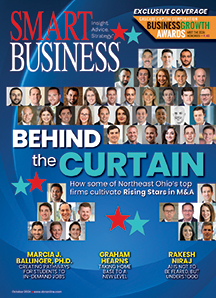
Nick Chase has had a powerful impact on the Enterprise Rent-A-Car brand. Interestingly, he doesn’t work for Enterprise — he never has. Chase is a computer programmer and technical writer who tweeted his way into the company’s brand identity and, ultimately, brought about a win-win situation.
It could have ended differently. Horrified that in his time of need the familiar Enterprise mantra, “We’ll pick you up,” wasn’t going to happen, and that no cars were available in his area, Chase tweeted:
“The one downside of living in the country is that when your car breaks down, you pray Enterprise has a car. Naturally, they don’t. Sigh.”
A few minutes later, Nick found the following @mention from @enterprise cares:
“@Nick Chase We are listening. Is there anything we can help with? If yes, please tweet/follow us & I’ll DM [direct message] our contact information (amanda).”
Chase did what Enterprise corporate representative Amanda asked him to do, and following a few Twitter messages, he was indeed picked up and able to rent the car he needed. Because an empowered employee was paying attention, Enterprise Rent-A-Car converted Chase from a frustrated customer into a brand advocate.
Weigh the pros and cons. Now imagine how Chase would have felt and what impact his experience would have had on him and his Twitter followers if Enterprise had responded with impersonal policy regurgitation or worse, no response at all. With 5,000 Enterprise locations throughout the United States, it’s likely that situations similar to Chase’s happen regularly, and the compounded positive (or negative) impact of these social media interactions is significant.
Unfortunately, too many companies are still using social media inappropriately or not at all. There are, of course, legitimate reasons to be cautious ― companies in heavily regulated industries such as health care, energy and financial services are held to a different scrutiny. However, a 2010 Palo Alto Networks report found that companies in heavily regulated industries are just as likely to have social media presences as lesser-regulated companies and universities.
While choosing not to participate in social media is inconceivable to millions of business professionals who rely on various networks for everything from marketing and customer service to research and business development, the “everybody else is doing it” argument seldom sways rational business leaders. The crux of the argument is not the volume of people using social media, but the fact that vital brand conversations are happening in the networks whether the brand owners participate or not.
Learn from other’s missteps. There have been some embarrassing high-profile social media failures from which we have all learned a thing or two. For example, fashion designer Kenneth Cole outraged followers with a Twitter message that used the #Cairo hashtag (denoting discussion of uprising events in Egypt) to advertise a spring clothing collection. Comedian Gilbert Gottfried was fired from his voice-over gig with Aflac for tweeting jokes about the natural disasters in Japan.
These ill-advised, over-the-top tweets were viewed as insensitive and cast the companies in a bad light.
The most common social media no-nos can be avoided with employee policies covering social media behavior and expectations, such as language, topics and reaction/response guidelines. A simple Google search for “social media employee policy” can bring up numerous examples and starting points for creating policies.
Monitor and react. As demonstrated in the Enterprise Rent-A-Car situation, having an empowered and knowledgeable individual monitoring social media networks (even on the weekends and other nonpeak hours) is important for maintaining a positive reputation. There are also service providers and software-as-a-service technologies that amalgamate various social media networks into a singular, user-friendly interface.
Indianapolis-based ExactTarget’s Interactive Hub including its Co-Tweet solution is one of the largest players in social media conversation monitoring across Twitter and Facebook. Raidious, a local interactive marketing management firm, offers Social Center, which “listens” for keywords and phrases and allows users to engage with people in real time across a broad spectrum of social platforms.
Companies that fail to define themselves are defined by their competitors and customers, and not always in positive, productive ways. This is true for all media, but especially in the fast and viral social media realm. The cost to companies choosing not to participate or to empower their employees to engage with customers via social media is much greater than any monitoring costs or personnel time directed toward managing reputations by solving problems and joining conversations.
James L. Jay is president and CEO of TechPoint, Indiana’s technology industry and entrepreneurship growth initiative. He also serves as president and CEO of TechPoint Ventures, which has invested more than $16 million in early-stage capital in 12 Indiana-based technology companies through HALO Capital Group since 2009. An Indianapolis native, he has a successful track record as an entrepreneur, business leader and public servant.

